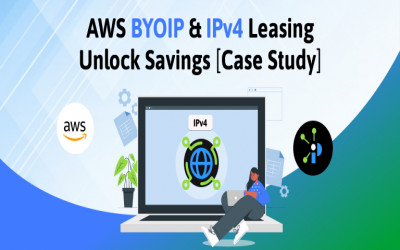What is NAT64? Can it solve IPv4 Exhaustion?
-
Posted at 2020-11-26 17:57:32
.jpg)
IPv4 Exhaustion
IPv4 is the fourth version of internet protocol, which has been in use since the year 1981. IPv4 uses a 32-bit IP address and has a numeric addressing method. The IPv4 has dots separated IP addresses and are far easier to remember in comparison with succeeding address types. One of the biggest advantages of IPv4 is that it enables the creation of a virtual layer over diverse devices. The IPv4 addresses are fast reaching its exhaustion limits as it handles almost 94% of internet traffic around the world.
The unallocated IPv4 address has drastically depleted since 2003. The IPv4 exhaustion was recorded started 2011 for APNIC, LACNIC, ARIN, AFRINIC, wherein RIRs (regional Internet registries) were left with only those addresses which were no longer in use or were unsubscribed.
What is NAT64?
NAT64 or Network Address Translation IPv6 has been conceived to facilitate network communication established by IPv6 and IPv4 hosts and networks only. One can regard NAT65 as an IPv6 transition technology. Due to the decreasing number of IPv4 address pool, migration to IPv6 was imperative. Options such as dual-stack, tunneling, and translation were contemplated in migrating from IPv4 to IPv6. Out of this, translation was adopted to facilitate network communication between IPv6 and IPv4 hosts and networks.
Network Address Translation IPv6 or NAT 64 has two advantages:
1. The migration was gradual and seamless while the experience was consistent.
2. Content providers and enablers were not required to make any changes in the network infrastructure and could offer services to IPv6 users via the translation technology of NAT64.
NAT64 is both stateful and stateless. A NAT64 stateful connection establishes a one-to-one relationship and helps in making an easy connection with IPv4 from IPv6 servers. While in the stateless NAT64 connection, the address mapping of IPv6 to IPv4 is required to be done by the IPv6 only host.
As NAT64 supports all types of translation technology scenarios- it was being preferred over NAT-PT (Network Address Translation-Protocol Translation. NAT64 functions as the gateway and transfer packets between IPv6 and IPv4 network after necessary translation. NAT64, on the other hand, maps IPv6 addresses to IPv4 vice versa, via an algorithm. This allows traffic following different protocols flow freely while maintaining their IPv4 addresses.
Problems with NAT64
NAT64 translation technology comes with its own challenges for the network administrators.
Listed below are some of the roadblocks:
1. NAT64 doesn’t ensure balanced translation since the number of IPv6 addresses exceeds IPv4. And, thus the one to one stateless mapping via algorithm is done.
2. The stateless NAT64 connection requires address mapping by IPv6 hosts only.
3. NAT64 can look like a DoS attack on some security devices.
4. NAT64 translates from IPv6 to IPv6 and not vice versa.
How to get IPv4?
IPv4 has strengthened network operations across the world for years. Businesses have reaped many benefits with IPv4 addresses. The scalability provided by IPv4 addresses and the capabilities of its network infrastructure made operation highly cost-effective. The IPv4 was configurable both manually and automatically. Undoubtedly, post its introduction, IPv4 offered more scalability, security, and cost-effectiveness. The simplicity of IPv4 prefixes made it easier for network admin to hasten up the implementation. This is why, though the world is running out of IPv4 addresses- yet, the demand for it has not ceased.
Prefixx facilitates sourcing, transaction, and transferring of IPv4 addresses. With Prefixx, getting IPv4 is safe and transparent. Having exhaustive experience in network design and implementation, we help buyers looking for IPv4 addresses meet the sellers and safely transfer their resources under proper supervision.
Here’s how you can get an IPv4 address with us:
Step 1. Buyer and seller are identified and an agreement is prepared for the assignment plan. Pre-approval for transfer are taken.
Step 2. Signing of purchase and lease agreement as funds are kept in an escrow account until final resource transfer takes place.
Step 3. Once IPv4 space is available for buyers, funds are released to the seller.
.jpg)

.png)
